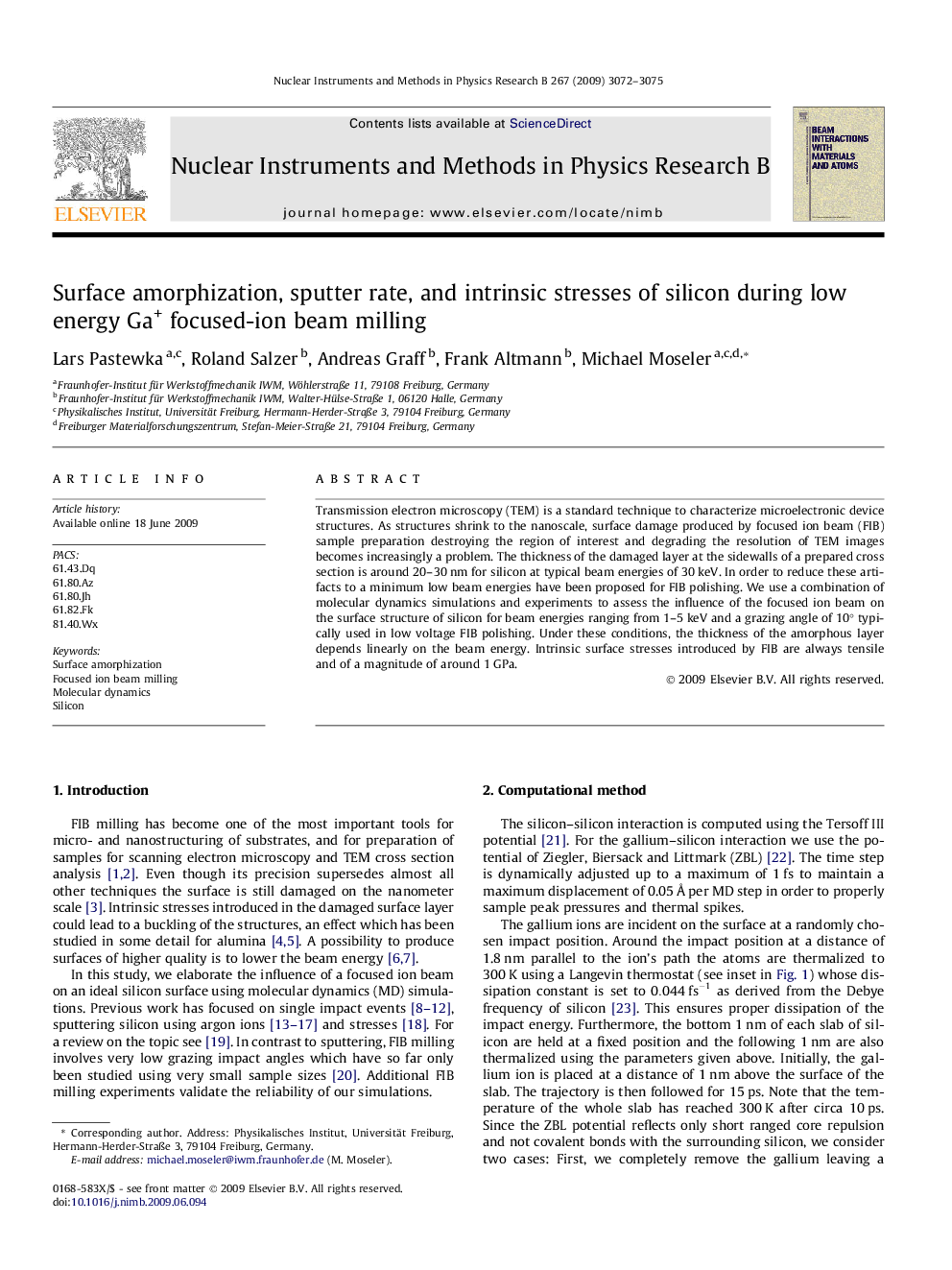| Article ID | Journal | Published Year | Pages | File Type |
|---|---|---|---|---|
| 1686994 | Nuclear Instruments and Methods in Physics Research Section B: Beam Interactions with Materials and Atoms | 2009 | 4 Pages |
Transmission electron microscopy (TEM) is a standard technique to characterize microelectronic device structures. As structures shrink to the nanoscale, surface damage produced by focused ion beam (FIB) sample preparation destroying the region of interest and degrading the resolution of TEM images becomes increasingly a problem. The thickness of the damaged layer at the sidewalls of a prepared cross section is around 20–30 nm for silicon at typical beam energies of 30 keV. In order to reduce these artifacts to a minimum low beam energies have been proposed for FIB polishing. We use a combination of molecular dynamics simulations and experiments to assess the influence of the focused ion beam on the surface structure of silicon for beam energies ranging from 1–5 keV and a grazing angle of 10° typically used in low voltage FIB polishing. Under these conditions, the thickness of the amorphous layer depends linearly on the beam energy. Intrinsic surface stresses introduced by FIB are always tensile and of a magnitude of around 1 GPa.
